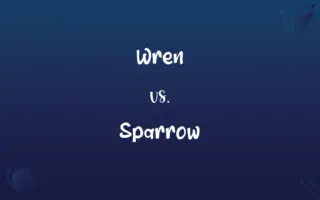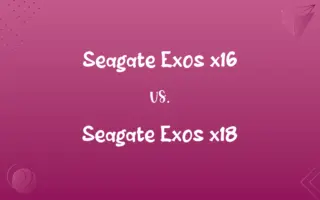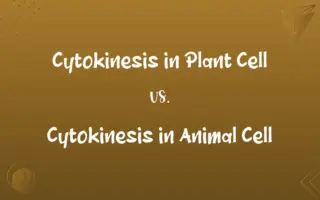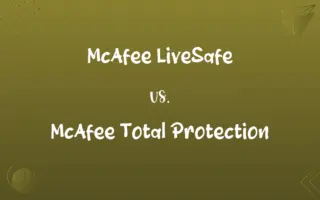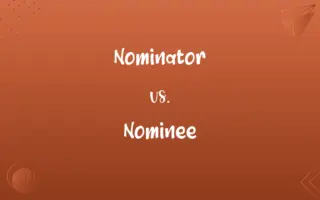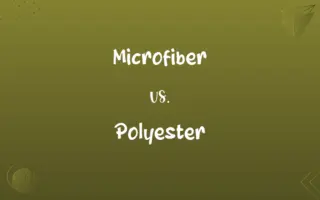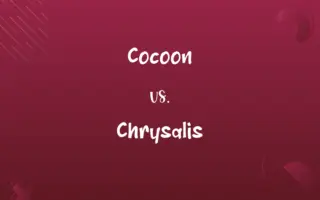Weaving vs. Embroidery: Know the Difference

By Shumaila Saeed & Hifza Nasir || Published on April 29, 2024
Weaving involves interlacing threads to create fabric, focusing on the material's structure. Embroidery is the art of decorating fabric with needle and thread, emphasizing design and embellishment.
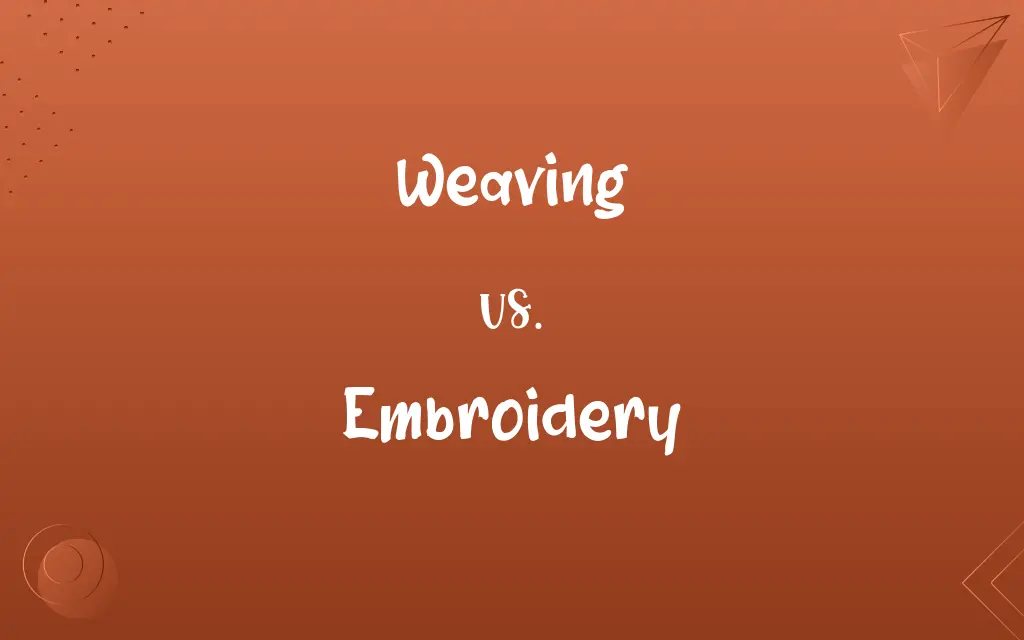
Key Differences
Weaving is a foundational textile production method where two distinct sets of yarns or threads, known as the warp and the weft, are interlaced at right angles to form a cloth. The primary purpose of weaving is to produce fabric or textiles, with the patterns and textures being integral to the fabric itself. Embroidery, in contrast, is a surface embellishment technique where decorative designs are created on top of an existing fabric using threads, often incorporating various colors and stitch patterns to add detail and texture.
Hifza Nasir
Apr 29, 2024
Weaving forms the basic structure of a fabric, embroidery is used to add aesthetic elements to an already existing textile. The distinction lies not just in the techniques but in the purpose: weaving creates the canvas, whereas embroidery decorates it.
Shumaila Saeed
Apr 29, 2024
Embroidery can be applied to various textiles produced by weaving, knitting, or other methods, offering limitless possibilities for customization and decoration. This versatility makes embroidery a popular choice for personalizing garments, household linens, and other fabric-based items.
Shumaila Saeed
Apr 29, 2024
The tools and materials used in weaving and embroidery also differ. Weaving typically requires a loom to hold the warp threads taut, while embroidery needs only a needle, thread, and often a hoop to keep the fabric stretched and manageable during the decorative process.
Hifza Nasir
Apr 29, 2024
Despite these differences, both weaving and embroidery hold significant cultural and historical value across the world, often reflecting traditional techniques and motifs passed down through generations. Each contributes uniquely to the world of textiles, with weaving providing the foundation and embroidery adding individual expression and flair.
Hifza Nasir
Apr 29, 2024
ADVERTISEMENT
Comparison Chart
Purpose
To create fabric by interlacing threads
To decorate fabric with needlework
Hifza Nasir
Apr 29, 2024
Process
Interlacing of warp and weft threads
Adding designs to existing fabric with stitches
Shumaila Saeed
Apr 29, 2024
ADVERTISEMENT
Versatility
Limited to the creation of textiles
Can be applied to any fabric surface
Shumaila Saeed
Apr 29, 2024
Cultural Significance
Reflects traditional fabric-making techniques
Showcases decorative and artistic expressions
Shumaila Saeed
Apr 29, 2024
Weaving and Embroidery Definitions
Weaving
A textile production method creating fabric by interlacing threads.
Weaving on a loom produces durable clothing materials.
Hifza Nasir
Feb 27, 2024
Embroidery
Adds aesthetic elements to existing textiles.
Personalized embroidery adds a unique touch to standard garments.
Shumaila Saeed
Feb 27, 2024
ADVERTISEMENT
Weaving
Often requires a loom for execution.
Traditional weaving techniques vary widely across cultures, each using unique loom types.
Shumaila Saeed
Feb 27, 2024
Embroidery
Requires minimal equipment, like needles and hoops.
With just a needle and thread, intricate designs can be embroidered onto any fabric.
Shumaila Saeed
Feb 27, 2024
Weaving
Foundation of fabric-making.
Weaving provides the essential materials for many forms of textile arts, including clothing and home goods.
Shumaila Saeed
Feb 27, 2024
Embroidery
The art of decorating fabric with needle and thread.
The embroidery on the dress featured exquisite floral designs.
Hifza Nasir
Feb 27, 2024
Weaving
Utilizes warp and weft threads for fabric structure.
The intricate patterns in the woven blanket are achieved through skilled warp and weft manipulation.
Shumaila Saeed
Feb 27, 2024
Embroidery
Offers limitless design possibilities.
Embroidery artists can create detailed scenes or simple monograms, showcasing versatility in design.
Hifza Nasir
Feb 27, 2024
Weaving
Creates textiles with various patterns and textures.
Weaving techniques can produce complex designs directly within the fabric.
Hifza Nasir
Feb 27, 2024
Embroidery
Utilizes a variety of stitches for design.
She used satin stitch and French knots to add texture to her embroidery.
Hifza Nasir
Feb 27, 2024
Embroidery
Ornamentation of fabric with needlework.
A pillow decorated with embroidery.
Shumaila Saeed
Feb 27, 2024
Weaving
To make (cloth) by interlacing the threads of the weft and the warp on a loom.
Shumaila Saeed
Feb 27, 2024
Embroidery
Needlework used to enrich textile fabrics, leather, etc.; also, the art of embroidering.
Shumaila Saeed
Feb 27, 2024
Repeatedly Asked Queries
Can embroidery be done on any fabric?
Yes, embroidery can be applied to various types of fabric, regardless of how the fabric was originally created.
Shumaila Saeed
Apr 29, 2024
What are the key differences in equipment between weaving and embroidery?
Weaving typically requires a loom, while embroidery needs only a needle and optionally an embroidery hoop.
Dua Fatima
Apr 29, 2024
How do beginners start with weaving or embroidery?
Beginners can start with basic looms and simple stitches, respectively, learning through tutorials, classes, or guides.
Dua Fatima
Apr 29, 2024
What is the primary purpose of weaving?
To produce textiles or fabric by interlacing warp and weft threads.
Hifza Nasir
Apr 29, 2024
How does embroidery enhance a fabric?
Embroidery adds decorative designs and personalized details to fabric, enhancing its aesthetic appeal.
Hifza Nasir
Apr 29, 2024
How do weaving and embroidery contribute to cultural expression?
Both forms hold cultural significance, reflecting traditional techniques, motifs, and storytelling through textile art.
Shumaila Saeed
Apr 29, 2024
Is it possible to combine weaving and embroidery?
Yes, embroidered embellishments can be added to woven textiles, combining both techniques for unique creations.
Shumaila Saeed
Apr 29, 2024
Which technique is older, weaving or embroidery?
Weaving is one of the oldest techniques for making textiles, while embroidery, though ancient, has been used to decorate textiles for millennia but is generally considered to evolve after the development of woven fabric.
Dua Fatima
Apr 29, 2024
What are some common uses of embroidery?
Embroidery is used in fashion, home décor, and art, for personalizing and embellishing items like clothes, linens, and wall hangings.
Hifza Nasir
Apr 29, 2024
Can weaving and embroidery be self-taught?
Yes, with resources like books, online tutorials, and community workshops, both skills can be learned independently.
Shumaila Saeed
Apr 29, 2024
Share this page
Link for your blog / website
HTML
Link to share via messenger
About Author
Written by
Shumaila SaeedShumaila Saeed, an expert content creator with 6 years of experience, specializes in distilling complex topics into easily digestible comparisons, shining a light on the nuances that both inform and educate readers with clarity and accuracy.
Co-written by
Hifza Nasir